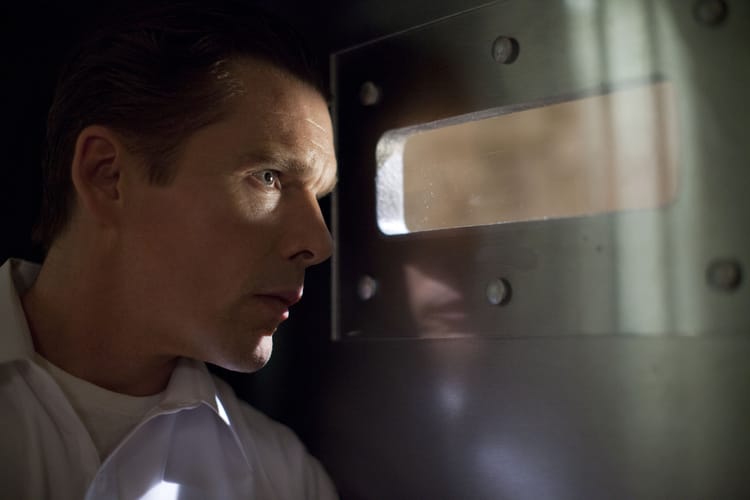There's nothing worse than watching a motion picture completely waste a brilliant premise. 2013's The Purge is one such movie. It's built on a marvellous idea that could've made for a mature and thought-provoking examination of contemporary society, but writer-director James DeMonaco has no interest in a quality motion picture, instead delivering a fatally ridiculous film that fails to take advantage of its potential. The Purge is stupid to a criminal degree, lobotomising itself over its eighty-minute duration. By the time the film reaches its climax, the proceedings have become so laughably silly that only the boldest viewers will make it through to the end.

In the near future, the United States government has sanctioned an annual "purge" for the country, wherein murder and assorted crimes are legal for twelve hours. Emergency services are suspended, police cannot be summoned, and general anarchy is permitted. As a result, crime rates for the other 364 days of the year are down, and the economy is more stable. Taking advantage of the situation, James Sandin (Ethan Hawke) is a home security salesman who has accrued substantial wealth through his business. On the night of the purge, James locks down the house as usual, ready to relax with wife Mary (Lena Headey), daughter Zoey (Adelaide Kane) and son Charlie (Max Burkholder). The night looks to be reasonably calm until Charlie decides to let a bloodied, helpless stranger (Edwin Hodge) enter their home. Making matters worse, the family are soon visited by a mob of armed "purgers" wanting to get the stranger. The Sandin family are given an ultimatum: give the man over, or the house will be stormed and all of them will be slaughtered.
Here's the thing: Charlie's choice to take in a potentially dangerous stranger is never believable, as it seems like it was only done for the sake of script convenience. And the family's decision to want to protect the guy, even though it could cost them their lives, is retarded. They do not know him, they owe him nothing, and yet they're prepared to protect him and possibly die for him due to a crisis of conscience? It's especially problematic since the stranger actually holds a gun to Zoey's head at one stage. And why is it that the armed mob spend so much time and effort trying to get to just one "homeless pig"? Couldn't they just keep hunting for other people? The Purge hopes nobody will think too much about it, as it's full of holes and vague motivations. Furthermore, the homeless guy is not even given a name or any characterisation beyond being a simple plot device. He does wear a set of military dog tags, though, to tell us that he must be a sympathetic good guy.

The idea of the annual purge is brilliant for a motion picture, provoking several questions. For instance, do businesses hire private armies to defend their property? What does this mean for the small businesses that are undoubtedly looted during the night? DeMonaco does show people killing and rioting, but what about other crimes? Do hackers and black marketers do most of their work during the purge? Alas, The Purge has no interest in exploring this stuff; instead, the premise is more like Assault on Precinct 13 (which was remade in 2005 from a script co-written by DeMonaco and starring Hawke), resulting in a routine "house under siege" flick marred by an over-reliance on silly horror movie theatrics. Indeed, DeMonaco wastes the most fertile premise in recent memory on a silly slasher movie that we've seen done before, done better, and done without all the elaborate set-up. Worse, DeMonaco captures a number of conflicts with herky-jerky cinematography, not to mention most scenes simply depict villains being conveniently killed mere moments before they plan to kill a main character.
Nit-pickers will adore The Purge, as DeMonaco's woeful screenplay of perpetual convenience, excessive idiocy, and unanswered questions is ripe for mauling. Had the writer-director pursued realism and depicted a truly nightmarish vision of society run amok, this could've been a harrowing motion picture full of potent societal commentary. But DeMonaco is only interested in cheap exploitation, with cartoonish violence replacing potentially fascinating details. The only real saving grace of the flick is Rhys Wakefield as the masked stranger; he's sinister and unpredictable, and his charisma makes him a memorable villain. The Purge's box office success has ensured that a sequel is coming, an avenue that might give the creative team a chance to create a truly epic horror film out of the superb central premise.
3.2/10
 Login
Login
 Home
Home 183 Lists
183 Lists 1665 Reviews
1665 Reviews Collections
Collections
 0 comments,
0 comments, 


































